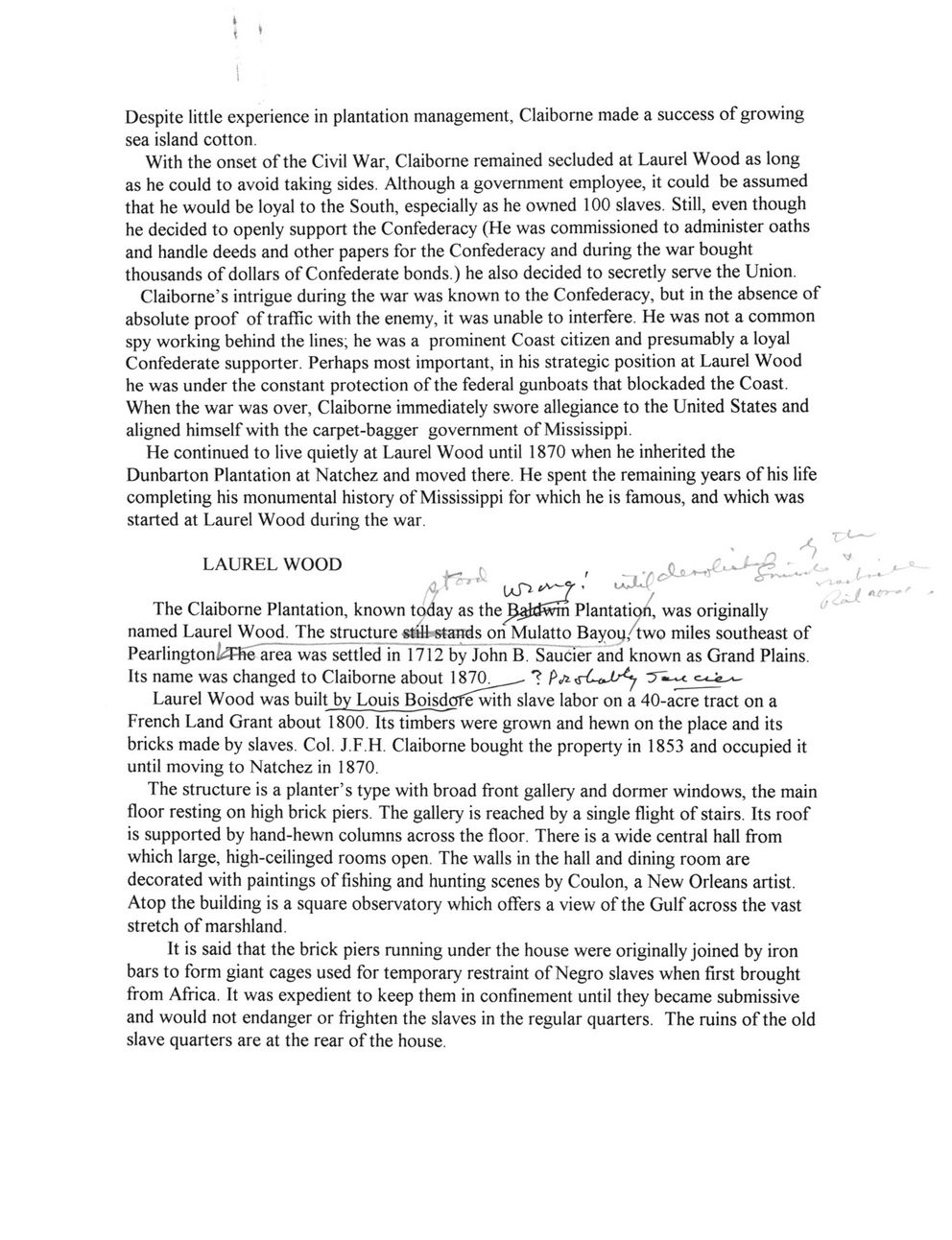This text was obtained via automated optical character recognition.
It has not been edited and may therefore contain several errors.
Despite little experience in plantation management, Claiborne made a success of growing sea island cotton. With the onset of the Civil War, Claiborne remained secluded at Laurel Wood as long as he could to avoid taking sides. Although a government employee, it could be assumed that he would be loyal to the South, especially as he owned 100 slaves. Still, even though he decided to openly support the Confederacy (He was commissioned to administer oaths and handle deeds and other papers for the Confederacy and during the war bought thousands of dollars of Confederate bonds.) he also decided to secretly serve the Union. Claiborne?s intrigue during the war was known to the Confederacy, but in the absence of absolute proof of traffic with the enemy, it was unable to interfere. He was not a common spy working behind the lines, he was a prominent Coast citizen and presumably a loyal Confederate supporter. Perhaps most important, in his strategic position at Laurel Wood he was under the constant protection of the federal gunboats that blockaded the Coast. When the war was over, Claiborne immediately swore allegiance to the United States and aligned himself with the carpet-bagger government of Mississippi. He continued to live quietly at Laurel Wood until 1870 when he inherited the Dunbarton Plantation at Natchez and moved there. He spent the remaining years of his life completing his monumental history of Mississippi for which he is famous, and which was started at Laurel Wood during the war. A LAUREL WOOD , r 0 ? The Claiborne Plantation, known today as the Bgfcdwm Plantation, was originally (/ named Laurel Wood. The structure ?ti44- stands on Mulatto Bayou/two miles southeast of Pearlington/i^fie area was settled in 1712 by John B. Saucier and known as Grand Plains. Its name was changed to Claiborne about 11 Laurel Wood was built by Louis Boisdofewith slave labor on a 40-acre tract on a French Land Grant about 1800. Its timbers were grown and hewn on the place and its bricks made by slaves. Col. J.F.H. Claiborne bought the property in 1853 and occupied it until moving to Natchez in 1870. The structure is a planter?s type with broad front gallery and dormer windows, the main floor resting on high brick piers. The gallery is reached by a single flight of stairs. Its roof is supported by hand-hewn columns across the floor. There is a wide central hall from which large, high-ceilinged rooms open. The walls in the hall and dining room are decorated with paintings of fishing and hunting scenes by Coulon, a New Orleans artist. Atop the building is a square observatory which offers a view of the Gulf across the vast stretch of marshland. It is said that the brick piers running under the house were originally joined by iron bars to form giant cages used for temporary restraint of Negro slaves when first brought from Africa. It was expedient to keep them in confinement until they became submissive and would not endanger or frighten the slaves in the regular quarters. The ruins of the old slave quarters are at the rear of the house.

Claiborne, J.F.H Claiborne-J.F.H-091